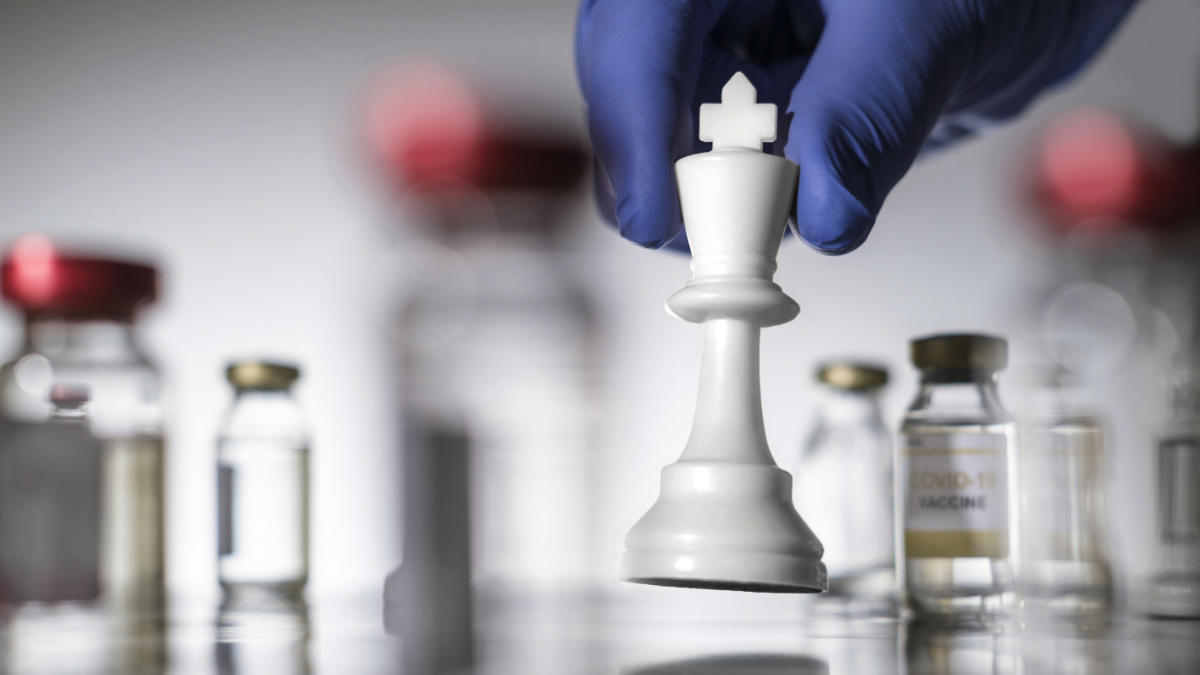Five ASX healthcare companies poised for game-changing catalysts

Pic: Getty Images
- Several ASX healthcare companies have upcoming catalysts, which can be a focal point for healthcare investors
- Dimerix forecasts the second interim analysis of its ACTION 3 global phase III trial of DMX-200 to treat FSGS in around mid-CY25
- Percheron expects a readout from its phase 2b trial of its lead program avicursen into non-ambulant boys with DMD before the end of CY24
In the healthcare sector, companies often work towards crucial events or milestones that can drive significant changes in a company’s market value, influencing investor sentiment and in turn stock performance.
Presenting both risk and opportunity, these catalysts often come in the form of regulatory approvals, clinical trial results or strategic partnerships, each of which can signal a shift in a company’s growth and financial prospects.
Approvals from regulatory bodies such as the US Food and Drug Administration (FDA), European Medicines Agency (EMA) or Therapeutic Goods Administration (TGA) enable companies to bring new drugs or devices to market and establish revenue streams.
When a product gains approval, stock prices often rise in anticipation of upcoming sales and earnings, providing a favourable response from investors.
Positive clinical trial results – particularly later-stage trials such as phase II or phase III – can lift a share price, indicating the likelihood of a product nearing market readiness.
On the flip side a negative trial result can cause a share price to fall, reducing the likelihood of a product making it to market. Catalysts are a focal point for healthcare investors and on the ASX there is no shortage of those coming up.
Here are some of the healthcare companies with upcoming catalysts.
Dimerix (ASX:DXB)
The clinical-stage biotech is forecasting the second interim analysis of its ACTION3 global Phase 3 trial of lead drug DMX-200, to treat focal segmental glomerulosclerosis (FSGS) in around mid-CY25.
The phase III study is titled Angiotensin II Type 1 Receptor (AT1R) & Chemokine Receptor 2 (CCR2) Targets for Inflammatory Nephrosis – or the far-more catchy ACTION3 for short.
DXB announced in March the ACTION3 phase III trial was successful in its pre-specified interim analysis of proteinuria (efficacy) endpoint from the first 72 randomised patients.
DXB said passing the early interim analysis suggested a statistically significant and clinically meaningful result in reducing proteinuria at the end of the study may be possible.
In its latest quarterly report DXB said recruitment for the full trial remained on track with ~170 clinical sites planned globally. A second interim analysis was planned after the first 144 patients completed ~35 weeks of treatment, which DXB said was currently expected around mid CY25.
Percheron Therapeutics (ASX:PER)
Formerly called Antisense Therapeutics, PER is focused on development and commercialisation of novel therapies for rare diseases.
PER is expecting a readout from its phase 2b trial of its lead program avicursen (ATL1102) into non-ambulant boys with Duchenne muscular dystrophy (DMD) before the end of CY24.
ATL1102 is an antisense oligonucleotide targeting CD49d, a receptor involved in white blood cell activity and has shown effectiveness in multiple inflammatory conditions, including multiple sclerosis and DMD.
A fatal and poorly treated disease, DMD is a genetic condition that affects about one in 10,000 males and results from a gene mutation, which affects production of the muscle protein dystrophin, causing movement-related muscle damage leading to chronic inflammation and progressive loss of function.
The current standard of care is cortico-steroids, which have limited efficacy and significant side effects when used continuously as required.
Mid last year PER kicked off recruitment to the international phase 2b randomised controlled trial in the treatment of non-ambulant (unable to walk unassisted) boys with DMD.
The study is now fully enrolled, with 48 boys randomised to the study across 16 hospitals in five countries.
The primary endpoint of the study is the change in PUL2.0 score at six months with data expected before the end of CY24.
“This will be a key milestone for the business and if successful will see a rapid re-rating of the share price along with potential licensing deals,” Morgans Healthcare analysts Scott Power told Stockhead recently.
EBR Systems (ASX:EBR)
Developer of the WiSE CRT System – which holds the distinction of being the world’s first leadless pacemaker for the heart’s left ventricle – also has an important upcoming catalyst with feedback on a FDA substantive review expected in late November.
The substantive review follows the FDA’s filing acknowledgement of EBR’s pre-market approval (PMA) application for WiSE and effectively moves the company into the final stages of its pathway to regulatory approval in the US.
It is a comprehensive evaluation process of the full PMA application, with key assessments including:
- A Bioresearch Monitoring (BIMO) audit to ensure the quality and integrity of EBR’s clinical trial study data, and to ensure test subjects that took part in investigations were protected from undue hazard or risk
- A Pre-Approval Inspection (PAI) to confirm EBR’s manufacturing, processing and packing procedures comply with quality system regulations, and that the facility can consistently produce devices that meet the approved specifications
During the substantive review, the FDA will provide feedback and request responses from the company prior to a decision regarding the approvability of WiSE.
The PMA application includes extensive technical documentation and comprehensive clinical data from all clinical trials to date, including from EBR’s pivotal SOLVE-CRT trial, which successfully met its primary efficacy and safety endpoints.
FDA approval for WiSE is anticipated in Q1 CY25. EBR said it remained on track for commercial launch in CY25.
Avita Medical (ASX:AVH)
The dual Nasdaq-listed wound-care company has several upcoming catalysts including the anticipate FDA approval of RECELL GO mini by December 31, 2024.
AVH’s RECELL System is approved by the FDA for the treatment of thermal burn wounds and full-thickness skin defects, and for repigmentation of stable depigmented vitiligo lesions.
The company said RECELL harnesses the regenerative properties of a patient’s own skin to create spray-on-skin cells, delivering a transformative solution at the point of care.
Power said RECELL Go Mini produced a smaller amount of skin cells to treat smaller sized wounds.
AVH is also anticipating FDA 510(k) clearance of Cohealyx, a collagen-based dermal matrix used to treat different types of wounds more effectively, before year-end with a forecasted launch in January 2025.
The company expects to initiate a post-market clinical study to validate the preclinical work of Cohealyx in Q1 CY25.
“The company has delivered on its third sales guidance and reconfirmed its full-year guidance and has strong news flow coming over the next few months including regulatory approval for RECELL Go Mini and Cohealyx, which should maintain an increased investor interest in the stock,” Power said.
Mach7 Technologies (ASX:M7T)
Specialising in innovative medical imaging software solutions M7T investors are awaiting news on a key catalyast for M7T before the end of CY24 – the rolling out of the US Veterans Health Administration (VHA) National Teleradiology Program (NTP) NextGen picture archiving and communications system (PACS) architecture.
M7T was selected as a solution provider for NTP, forming part of a consortium that includes Nuance, Blackford AI and Microsoft Azure with the combined solutions forming part of its NextGen PACS architecture.
The NextGen PACS program involves two major phases. Phase one, forecasted for rollout in December, will introduce M7T’s Vendor Neutral Archive (VNA) and eUnity viewer solutions, with a potential three-year contract value of $11.7m for M7T.
Phase two – contingent upon a number of success factors in Phase one – involves expansion into VA’s hospital network to support up to seven Veterans Integrated Services Networks (VISNs) with migration, integration and software and represents an additional potential contract value of $47.9m for M7T over a five-year term.
“We are really looking for more contract wins to come through to re-engage investor interest, which has been poor over the last six months or so,” Power said.
At Stockhead, we tell it like it is. While Dimerix and EBR Systems are Stockhead advertisers, the companies did not sponsor this article.
Disclosure: The journalist held shares in Mach7 at the time of writing this article.

UNLOCK INSIGHTS
Discover the untold stories of emerging ASX stocks.
Daily news and expert analysis, it's free to subscribe.
By proceeding, you confirm you understand that we handle personal information in accordance with our Privacy Policy.








